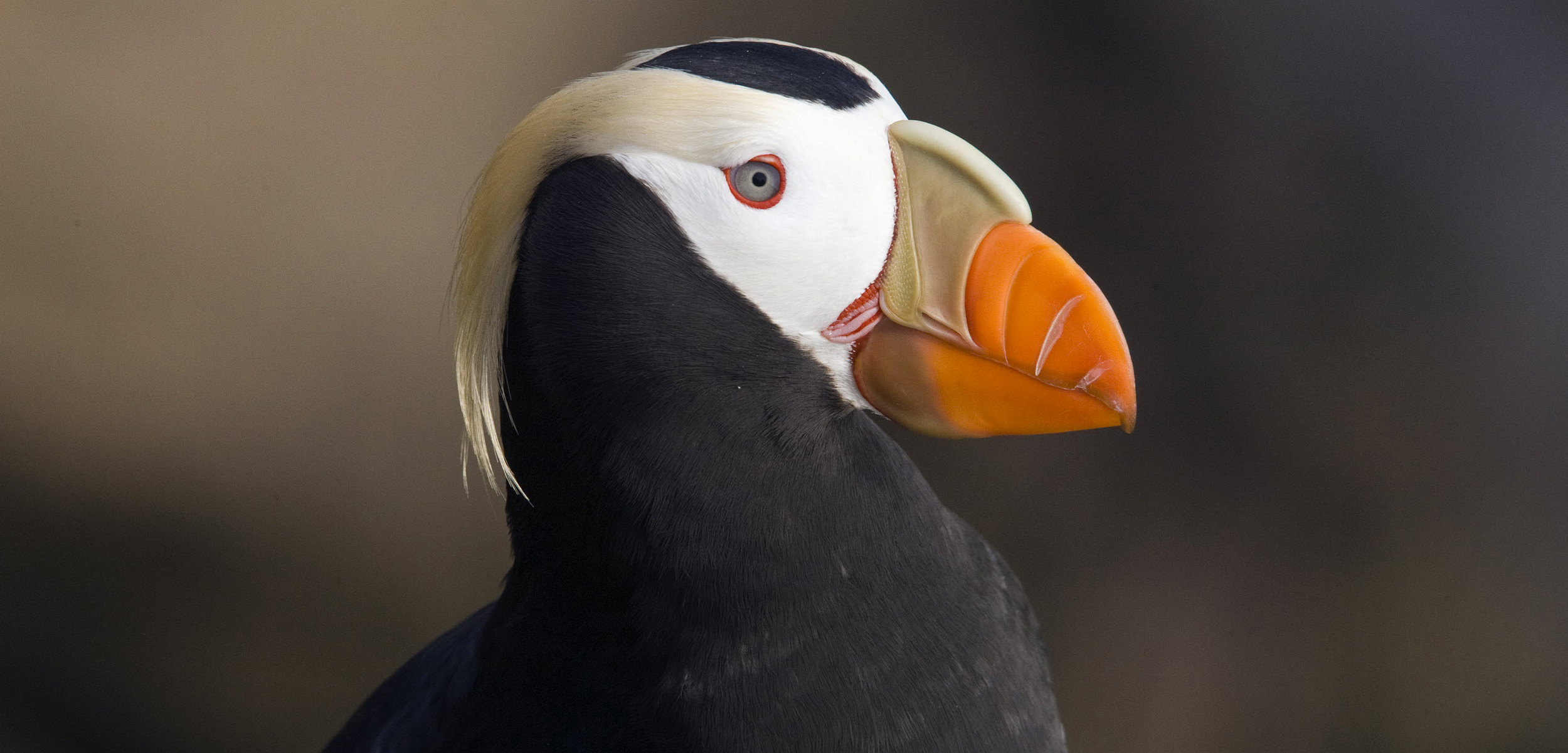The Secret of This Puffin’s Big Beak
The tufted puffin’s big, beautiful, orange beak bucks the trend.
Article body copy
At the height of summer, Hannes Schraft scaled the muddy slopes of Alaska’s Middleton Island, trying to get as close as possible to its most majestic residents: tufted puffins. Though the puffins are easily distinguished by the Trumpian yellow crests they sport during their breeding season, the doctoral student from the University of California, Davis, used a thermal camera to capture the birds’ other most distinctive feature: their lustrous orange bills. In the resultant photos, Schraft discovered that the birds’ beaks weren’t just beautiful—they were positively glowing.
Schraft’s interest in the birds’ beaks was motivated by a hypothesis—that puffins dissipate excess heat through their bills—posited by Kyle Elliott, an ecologist at McGill University in Quebec. Bird beaks are highly vascularized, with large amounts of blood pumping through their many vessels. So far, however, researchers have only proved that toucans, hornbills, and Pekin ducks shed heat through their bills. Schraft’s study shows that puffins do the same thing, using the wide surface of their bill to dispense the immense amounts of energy generated during flight. Their heat output, according to some back-of-the-envelope calculations by Elliott, is equivalent to that generated by a light bulb.
This would explain why puffins do not conform to the general evolutionary principle that, for birds, the colder the climate, the shorter the beak—the better, it is thought, to conserve body heat.
For Mike Harris, a professor emeritus at the UK Centre for Ecology & Hydrology and a renowned expert on puffins, the research also provides new clues as to why the birds evolved their distinctively large, stubby bills. For many years, two theories prevailed: the beak allows puffins to hold more fish in their mouths, or it is used for display during the mating season. “Now, this idea that it might be important for heat loss has appeared,” says Harris.
Whether or not heat loss is the primary reason puffins evolved their distinctive bills is, however, unprovable, he says. Schraft agrees: “What makes this a tricky question is that there are other seabirds that have high flight costs that don’t have those large bills, like the thick-billed murre.” The beaks of toucans and hornbills likely also help with gathering fruit and play some role in sexual selection.
Even so, there is tantalizing indirect evidence that heat dissipation has played an important, if varying, role in influencing beak size in all birds.
“When they’re sleeping at night, when it’s cold, they’ll tuck their bills into their plumage,” says Schraft. “Presumably that’s to conserve heat because their beaks get cold otherwise.” Only further study will shed more light on this intriguing evolutionary mystery.

